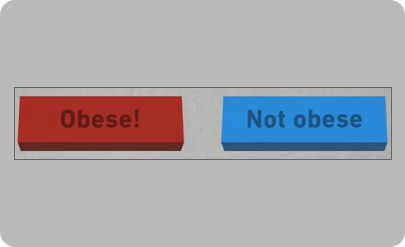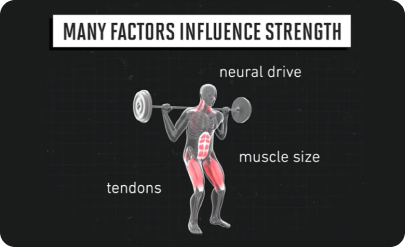It’s a fair assumption that you spend time in the gym hoping that your training investment will pay optimal rewards in the form of gains. Unfortunately, this may not be necessarily true. As in many other compartments of life, quantity doesn’t always equate to quality.
In the body-building world, Junk Volume refers to any training you do that takes up time and energy but has no actual benefit in terms of muscle or strength gain.

The scientific evidence is pretty clear in showing that junk volume is a real phenomenon and it seems to me that it’s holding many trainees back from getting the gains that they want.
Trainees who are guilty of including junk volume in their workout tend to fall into one of three categories. Let’s take a look at each one in isolation and discover how to stay away from each one.
Three Most Common Types of Junk Volume and How to Avoid Them
1
EXCESSIVE VOLUME
To illustrate this first form of junk volume, visualize yourself training your chest with a flat dumbbell press. After a quick warm-up, you do your first working set for 8-10 reps. It’s a hard set, within one or two reps of failure. In this case, because the muscle is being stretched and shortened under load with control, it’ll no doubt generate a high amount of mechanical tension within the pec.
Obviously then, this set will be very effective at stimulating muscle growth and thereby it falls under the umbrella of what we’d call Effective Volume. It’s definitely not junk volume!
If you did two sets, instead of one set like this, both sets would be effective at stimulating growth. Furthermore, if you did three sets, the third set would be effective as well.
But what if you did 10 sets? Would all 10 of those sets be equally effective at stimulating muscle growth?
Would you expect to see 10 times the growth if you did 10 times the sets, or would the stimulus per set eventually diminish to the point we might as well just call them wasted sets or Junk Volume?

I think it’s obvious that your return per set will diminish, but at what point does it become junk?
Is it after 3 sets per body part, 10 sets, 20 sets?
How many sets in a single workout can we do before we’re just wasting our time, energy, and ability to recover?
Let’s take a look at a comprehensive in-house meta-analysis from James Krieger which pulled the results of nine separate studies looking at the impact of adding sets on hypertrophy.

As you can see in the graph, up to around six sets per muscle, we see a pretty clear benefit in terms of muscle growth. However, once you go above six sets, you hit a pretty hard plateau and maybe even regress a bit.
You may recall how in previous blogs I’ve talked about weekly volumes and I’ve said that roughly 10-20 sets per muscle per week is usually the sweet spot. I still think that’s true.
However, in this blog, I’m talking about volume per muscle per day. How much volume should you do in a single workout to maximize muscle growth?
Going back to our chest example, sure you could do 10,12,14 sets for your chest in a single workout, but those extra sets beyond 6-8 probably aren’t doing much to help grow your chest. In fact, at a certain point they could be counterproductive because now your chest is going to have a harder time recovering from all that volume.

Of course, all six of those sets don’t have to be performed doing the same exercise. For example, you could do three sets of flat dumbbell presses, then do three sets of incline cable fly. However, if you then go and do another three sets of machine presses, followed by another three sets of push-ups, some of those sets are going to be falling into the junk territory for most people.
If you feel like you really need that much chest volume in order to keep progressing, you’d be better off splitting those extra sets out into separate workouts. On the other hand, maybe you don’t actually need as much volume as you think you do and thereby you’d be better off keeping your volume the same and instead focusing on other variables like your technique execution and effort per set.
Before we go any further, I need to make a few important caveats.
If you look at Krieger’s volume graph, you’ll notice that there’s a lot of variance in the data. This means that for any given volume, there’s a big range in terms of muscle growth for different studies in different individuals.

Keep in mind that this line is simply reporting the average trend. The conclusion then is that most people won’t get more gains out of doing more than six sets for a muscle in a single workout.
No doubt, some of you reading this blog have volume curves that look something more like the one below. For some of you, you might not run into junk volume until you reach 10 or 12 sets … possibly more.

The trend line (first graph) should be your starting place. From there, you’ll want to adjust the numbers up and down as you assess your own progress and recovery.
I also think your volume needs depend on how much you train to failure. If you push each and every set to absolute failure, your volume cap will be lower. To be clear, the six-set figure that I’m suggesting here assumes that you’re not taking every set to true failure, but you are getting pretty close. The takeaway refers to 6 hard-working sets close to failure for a single muscle in a single workout.
If you’re regularly going well above this, you might not be pushing those sets as hard as you think you are or you might be wasting time and energy on junk volume.
I should also say that if you’re doing less than six sets per muscle per workout, that’s perfectly fine as long as your total weekly volume is sufficient.
For example, for the biceps, you could do three or four sets of different curl variations on Monday, Wednesday, and Friday and then that would add up to be 10 effective weekly sets, which is solid.

Six sets should be seen as an upper threshold per workout, not a minimum threshold that you need to hit every time you train a muscle. I also think these numbers differ depending on body part. Based on my coaching experience, some body parts really do seem to tolerate and benefit more from higher volumes.
For example, I think the back, glutes and quads usually grow better with more sets. So I would speculate that the average per session effective volume might be closer to 10-12 sets for those muscles and closer to 6-8 sets for everything else.

This realization is partly why I still think the traditional bro split will be sub-optimal for most people. If you do 20 sets for your chest on your Monday chest day, at least half of that volume is pretty much junk for most people. I’m not saying it’s doing nothing, but I really doubt those last few sets will make a noticeable difference.
On the other hand, if you instead do 10 sets for your chest on Monday’s upper body day and then 10 sets for chest on Thursday’s upper body day, suddenly, you’ve cut down on your junk sets. I do think that approach would result in better progress.
Before moving on, I should mention that the latest research does show that bro splits still work just fine, as long as weekly volume is matched.
Still, I think that if you’re trying to go from the intermediate to advanced stage or from advanced to elite stage, most people won’t be able to get there as efficiently on a bro split because to keep driving progress upward, you’re gonna need to bump your weekly volume up. If you try to stack all those extra sets on one day, they eventually just start to look more junky.
At that point, it just makes sense to distribute your sets more evenly throughout the week, whether that be through an upper, lower, push-pull legs, full body, or some hybrid split.
2
EASY SETS
It seems to me that this is the most common and most pernicious type of junk volume that there is, at least in commercial gyms and with more casual lifters.
Research shows that when people are left to their own devices, most lifters don’t train hard enough to maximize muscle growth past the newbie phase. In those studies, people were asked to pick a weight that they’d normally do for 10 reps on the bench press and then the researchers had them actually do it for as many reps as they possibly could.

Only 22 percent of people got 10-12 reps, which I’d argue is about where you want to be to maximize muscle growth. Only 22 percent were actually there. 31 percent got 13-15 reps, which means they’d be leaving about three -five reps in the tank.
Even though this will still build muscle, if this type of volume dominates your routine, you might have a hard time getting past the beginner to early intermediate stage. I personally wouldn’t call this junk volume because it’s still worth something, especially if you’re doing multiple sets.
However, the 47 percent of people who got 16-20 plus reps with their typical 10 rep weight left 6-10 or more reps in the tank, and this is what I’d call junk volume. You’ll never get past the intermediate stage training this way.

For practical purposes then, the majority of hypertrophy work should be within 0-3 reps from failure and it’d be smart to take some of those sets all the way to failure, whether you do that on the last set for each muscle like Dr. Schoenfeld recommends, or on the last week of a mesocycle like Dr. Israetel recommends.
3
ULTRA-HIGH REP SETS
Anything upwards of 40-50 reps are those so-called easy sets. It isn’t that ultra-high rep sets don’t do anything, they’re just far from optimal.
Research shows that you can train too lightly, even if you go to failure. That cut-off point seems to be somewhere in the range of 20 percent of your 1 rep max.

So if you’re regularly doing sets in the range of 50 plus reps, you’d be a lot better off simply increasing the weight and getting down below 30 reps or so.
Apart from this, I think the biggest downside of ultra-high rep work is that it creates a huge recovery demand for no added hypertrophic stimulus. It can get you super sore, impair your performance for future workouts, and end up compromising your results, despite actually working harder.
If you guys are interested, I spoke with researcher James Krieger about junk volume on my podcast. I’ll share the link below.
I’ve also launched the final 10-week installment of my PowerBuilding Series which you can learn more about over on jeffnippard.com.

In addition, if you would like to further explore the topic in video format, a summed-up video of this blog is also available on my YouTube channel.
On that note, I’ll end here by saying thank you so much! I’ll look forward to digging into another topic with you here in the next blog.
Get my new 10-week Powerbuilding Phase 3 program here:
https://jeffnippard.com/products/powerbuilding-phase-3-0
If you're still in your first 1-2 years of lifting, I strongly recommend running my Fundamentals Program:
https://jeffnippard.com/products/fundamentals-hypertrophy-program
Full junk volume podcast with James Krieger:
Junk Volume Discussion with James Krieger
References:
James Krieger Meta-analysis:
Training Frequency Study:
https://pubmed.ncbi.nlm.nih.gov/35069251/
Easy Sets Study:
https://pubmed.ncbi.nlm.nih.gov/29112055/
High Rep Sets Study:



